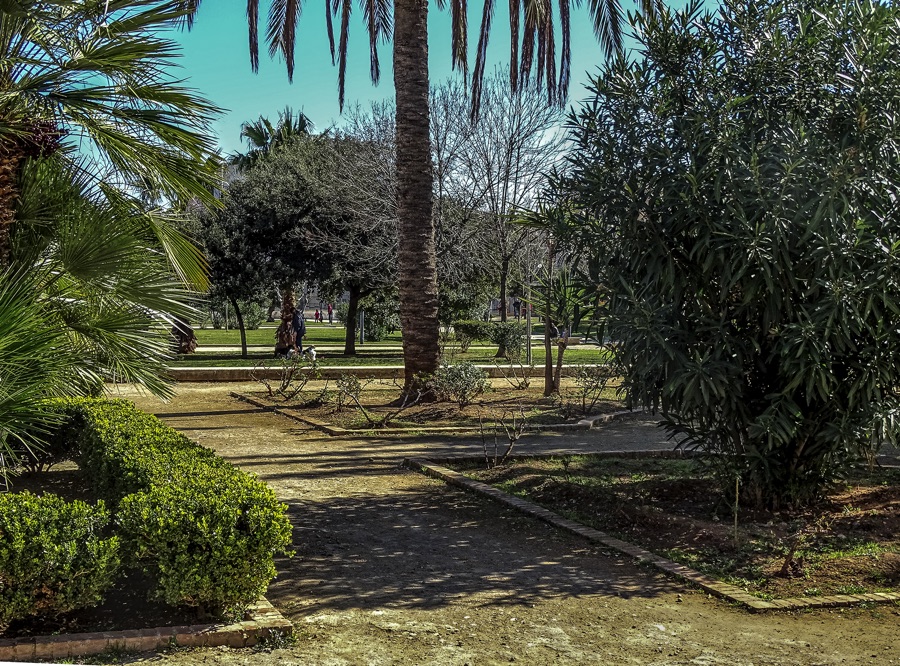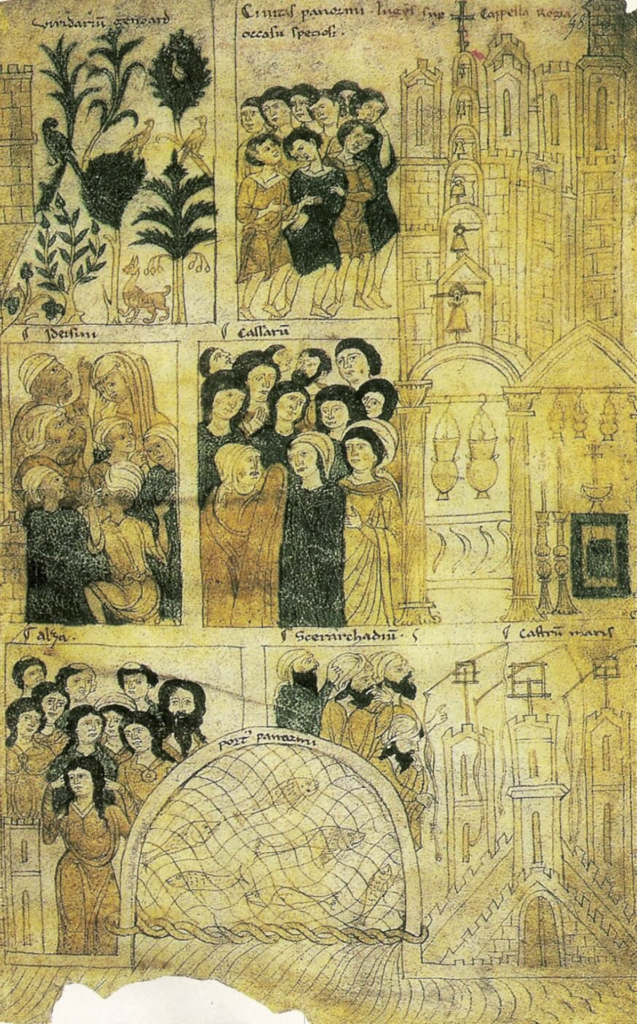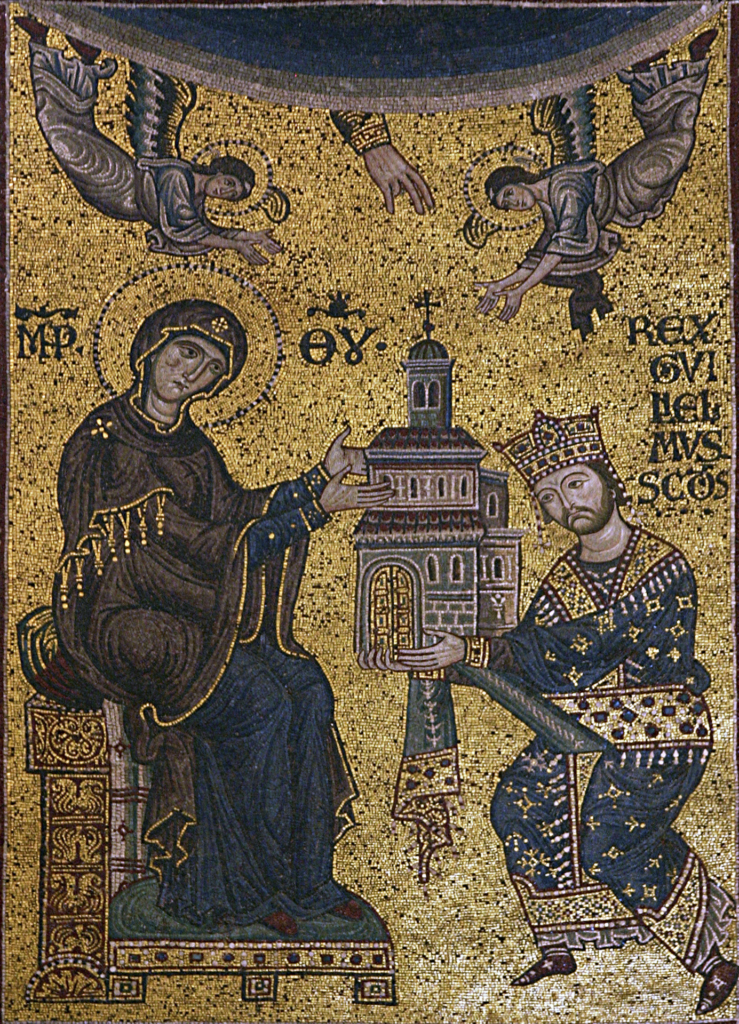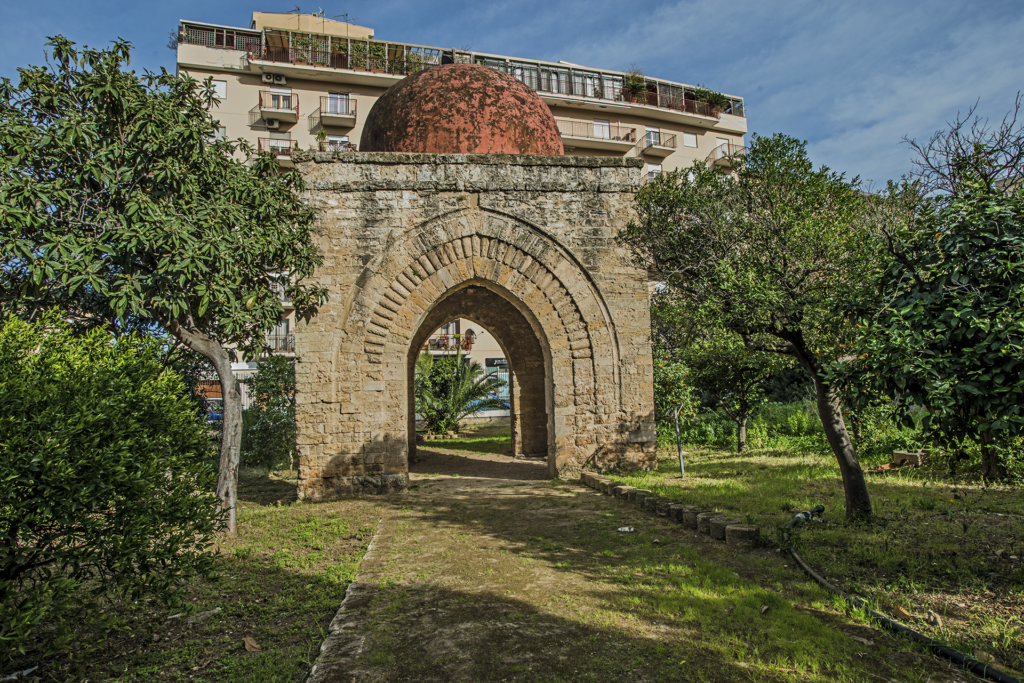Palermo in
Islamic
and subsequently
Norman
times was surrounded by numerous parks and gardens, organised around palaces, monasteries and splendid residences, both winter and summer.

Trees, flowers and plants such as citrons, lemons, oranges and jasmine were introduced into these lush green expanses, partly thanks to the use of new irrigation systems of Arab origin. The gardens, undoubtedly of Persian origin, were located far from the urban centre and were privileged places of entertainment for the rulers. An interesting testimony can be found in the
Liber ad honorem Augusti
of
Pietro da Eboli
, dating from around 1197, where, in a valuable miniature depicting the
Genoard
Park, exotic plants and animals are also noted.
 The Genoard, which was one of the most important and extensive parks, in the period of William II, extended from the city of Palermo, eastwards, in the valley of the
Oreto river
The Genoard, which was one of the most important and extensive parks, in the period of William II, extended from the city of Palermo, eastwards, in the valley of the
Oreto river
, to the south where it bordered with
Altofonte
.
 The name derives from the Arabic Jannat al-ard, Garden or Paradise of the Earth; it occupied the whole western part of the fertile plain of Palermo, which in modern times would be called
Conca d'Oro
The name derives from the Arabic Jannat al-ard, Garden or Paradise of the Earth; it occupied the whole western part of the fertile plain of Palermo, which in modern times would be called
Conca d'Oro
. The park is described as a place of pleasures, full of sounds, scents and colours, like the Persian Riyads, thanks to the presence of citrus groves, orchards irrigated by perennial waters, fountains, springs, water tanks surrounded by palm trees and numerous species of animals.
Inside the Genoard, close to the spring waters and placed at a relative distance, there were dwellings, palaces and pavilions: the
Cuba
, the Zisa, the
Cuba Soprana
, the
Cubula
, or small cuba, the
Menani
and the
Scibene
.
 The Genoard Park also includes the
Maredolce
The Genoard Park also includes the
Maredolce
Park, in the southern countryside of the Palermo plain, established by Roger II and also called Parco Vecchio (Old Park).
 Inside is the
Castle of Favara
Inside is the
Castle of Favara
, where an artificial lake, with an island in the middle, was built for winter fishing. The Genoard was a privileged link with Monreale and other royal parks, including the Parco Nuovo (New Park), now known as Altofonte, ordered by Roger II as a hunting reserve, located in a privileged position between the Conca d’Oro and the Gulf of Palermo.
Here, in 1153, the first King of Sicily also had a
palace
built, which is still partly visible today, together with a small
chapel
dedicated to the Archangel Michael.
Of the ancient building, only three arches now remain. The original plan consisted of a series of rooms arranged around a porticoed courtyard with pointed arches.
According to ancient sources, the park was populated by fallow deer, roe deer and wild boar for hunting, shaded by trees and rich in water springs.